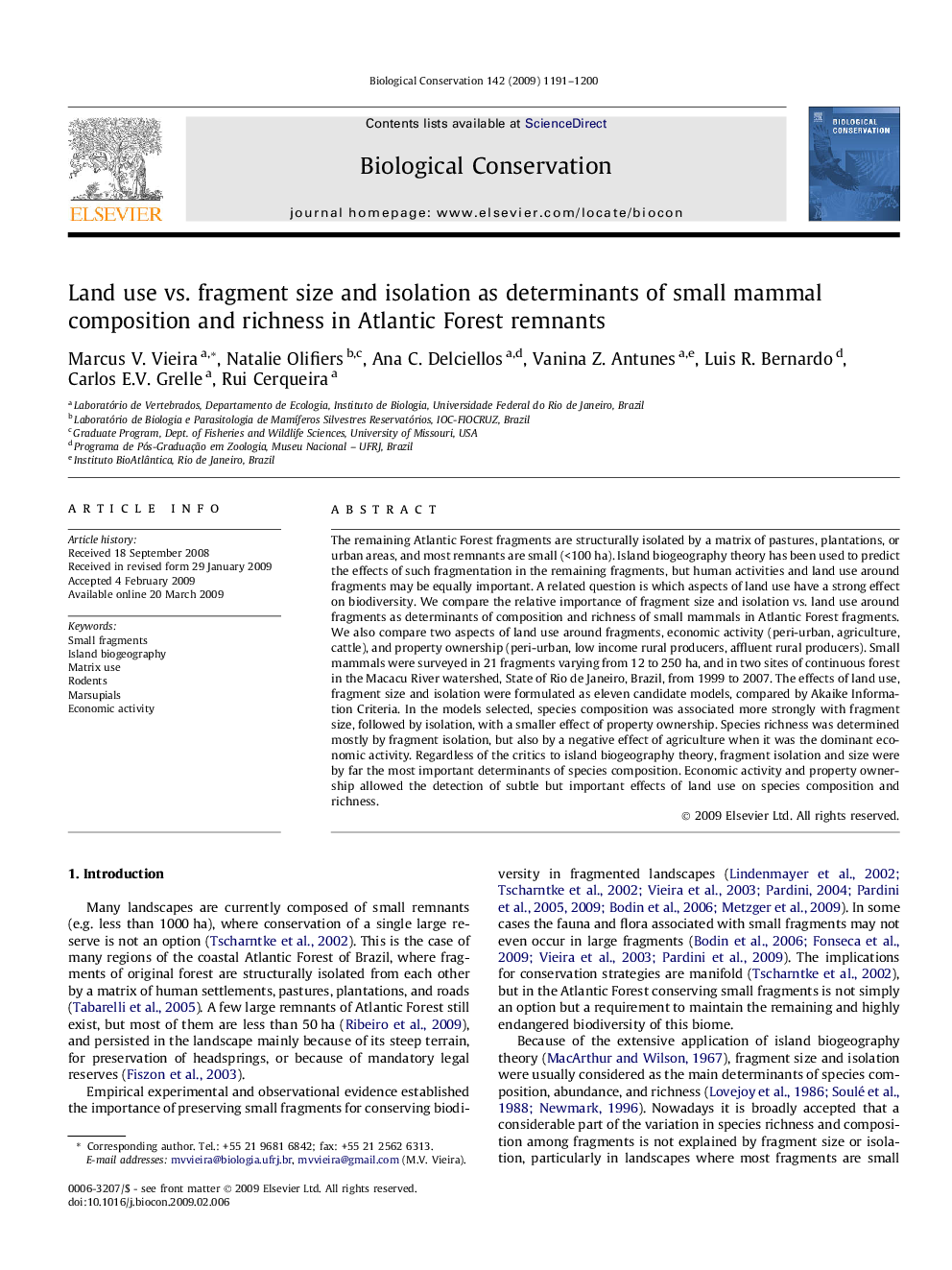| کد مقاله | کد نشریه | سال انتشار | مقاله انگلیسی | نسخه تمام متن |
|---|---|---|---|---|
| 4386090 | 1304556 | 2009 | 10 صفحه PDF | دانلود رایگان |

The remaining Atlantic Forest fragments are structurally isolated by a matrix of pastures, plantations, or urban areas, and most remnants are small (<100 ha). Island biogeography theory has been used to predict the effects of such fragmentation in the remaining fragments, but human activities and land use around fragments may be equally important. A related question is which aspects of land use have a strong effect on biodiversity. We compare the relative importance of fragment size and isolation vs. land use around fragments as determinants of composition and richness of small mammals in Atlantic Forest fragments. We also compare two aspects of land use around fragments, economic activity (peri-urban, agriculture, cattle), and property ownership (peri-urban, low income rural producers, affluent rural producers). Small mammals were surveyed in 21 fragments varying from 12 to 250 ha, and in two sites of continuous forest in the Macacu River watershed, State of Rio de Janeiro, Brazil, from 1999 to 2007. The effects of land use, fragment size and isolation were formulated as eleven candidate models, compared by Akaike Information Criteria. In the models selected, species composition was associated more strongly with fragment size, followed by isolation, with a smaller effect of property ownership. Species richness was determined mostly by fragment isolation, but also by a negative effect of agriculture when it was the dominant economic activity. Regardless of the critics to island biogeography theory, fragment isolation and size were by far the most important determinants of species composition. Economic activity and property ownership allowed the detection of subtle but important effects of land use on species composition and richness.
Journal: Biological Conservation - Volume 142, Issue 6, June 2009, Pages 1191–1200